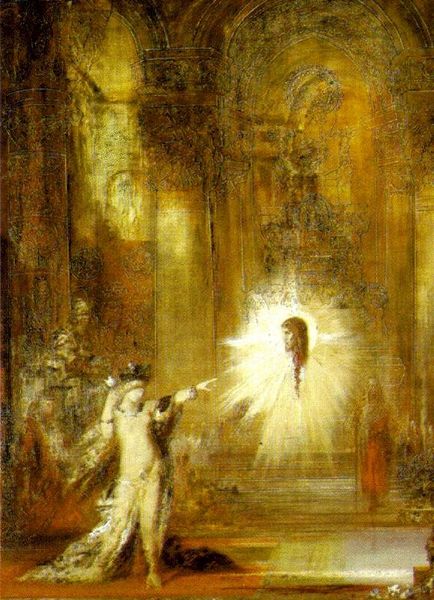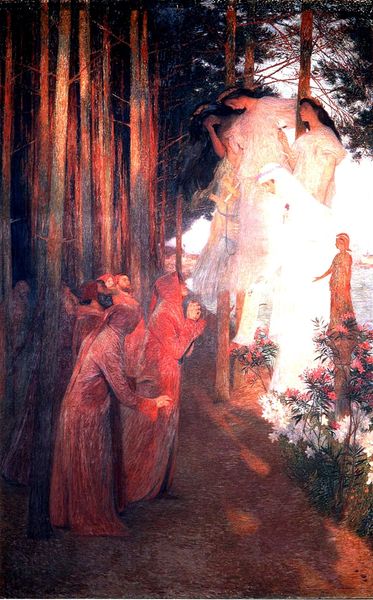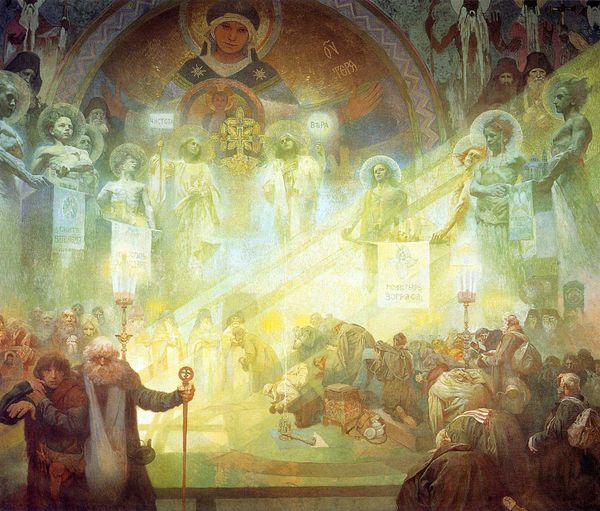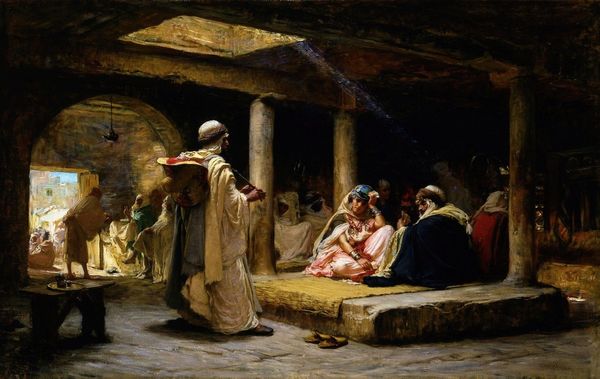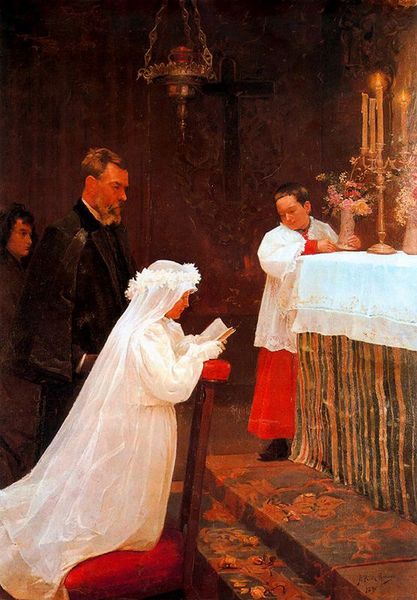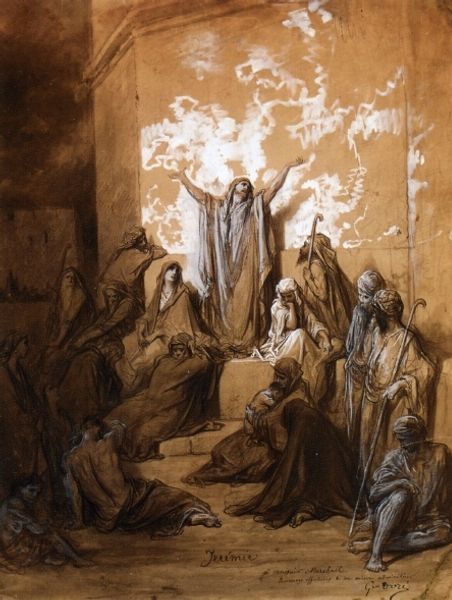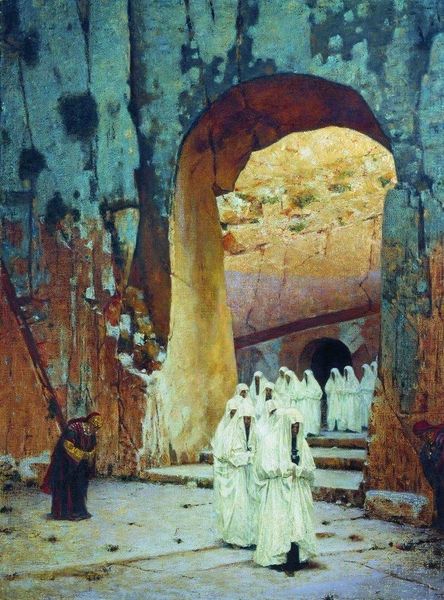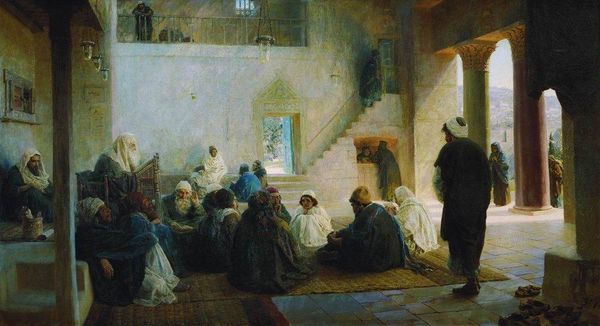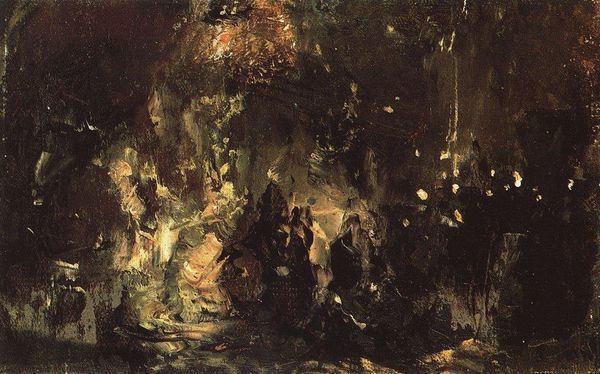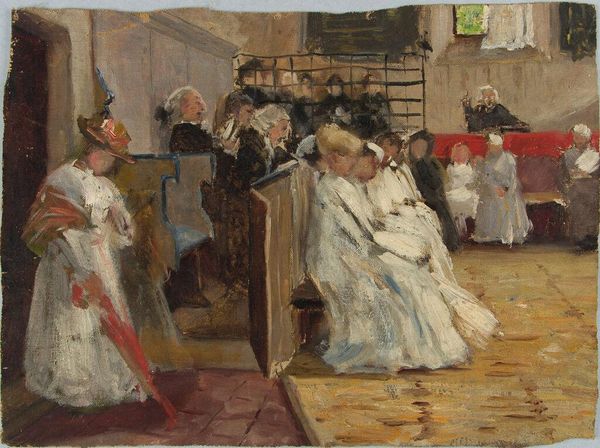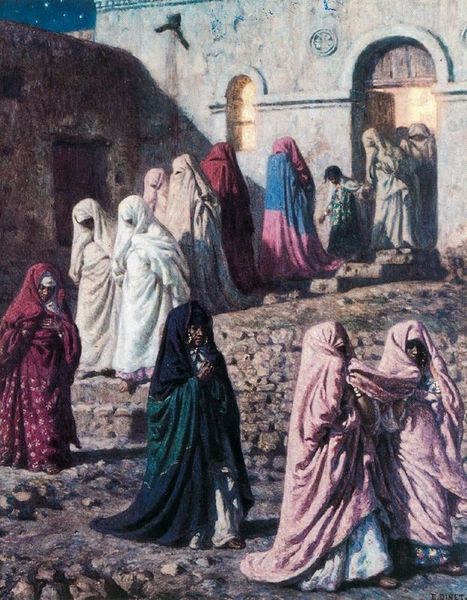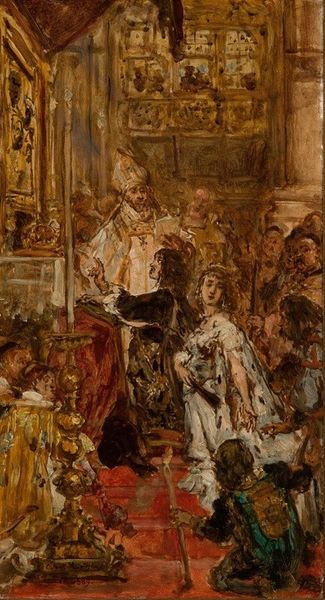
painting, oil-paint
#
impressionistic
#
painting
#
impressionism
#
oil-paint
#
impressionist landscape
#
figuration
#
underpainting
#
genre-painting
#
expressionist
Copyright: Public domain
Curator: Ah, the 'First Communion' painting, believed to be by Ferdynand Ruszczyc. I find it particularly intriguing due to its... shall we say, atmospheric ambiguity. Editor: My immediate impression is one of ethereal lightness. A cloud of white veils almost dissolves into the church's haze, save for the bold touches of candle flame. What period are we looking at here? Curator: Dates are somewhat uncertain, adding to its mystery. The style strongly suggests the Impressionist era. The figures, particularly the children, are almost ghostly, which certainly evokes the profound sense of ceremony. The white symbolizes purity, of course, amplified by their communal garb. Ruszczyc's use of light hints at transcendence, don't you think? Editor: Definitely. That singular, glowing censer hovering above is wonderfully symbolic—almost a visual representation of communal spirituality rising upwards. White, especially in a religious context, taps deep into our cultural understanding of innocence and rebirth, but, perhaps, this whiteness also represents absence. Are we really seeing individuals, or has the sacred occasion dissolved them into uniform devotion? Curator: A potent observation. Perhaps that duality is exactly what Ruszczyc was trying to capture - the merging of individual and collective spiritual experience. His brushwork is so free, yet carefully guided. Note how the architecture is merely suggested, focusing the eye instead on the figures. Editor: It speaks volumes that details become secondary in the pursuit of capturing something almost indescribable – faith. Think of how the individual candle flames mimic the larger censer - a smaller light contributing to a shared luminescence. What fascinates me further is that, despite its grand subject, it feels intimately observed. Curator: Precisely. And isn't that the marvel of it all? Capturing vast spiritual experience within a single, beautifully blurred frame. I suppose its allure lies in its visual hymn of faith and, ultimately, innocence. Editor: Yes. A reminder that these symbols aren't static - they evolve, transform and come alive in the hands of the beholder. Each generation rewrites its story to reflect their deepest fears, dreams, and convictions. And as we look into the light it’s not the symbols themselves that bring a clarity; instead, we see ourselves anew.
Comments
No comments
Be the first to comment and join the conversation on the ultimate creative platform.
